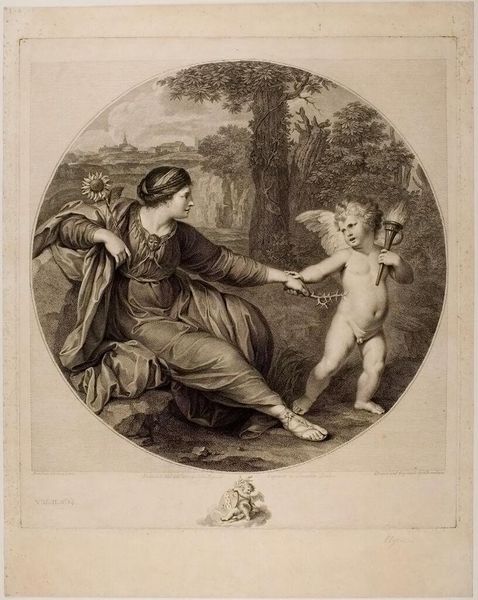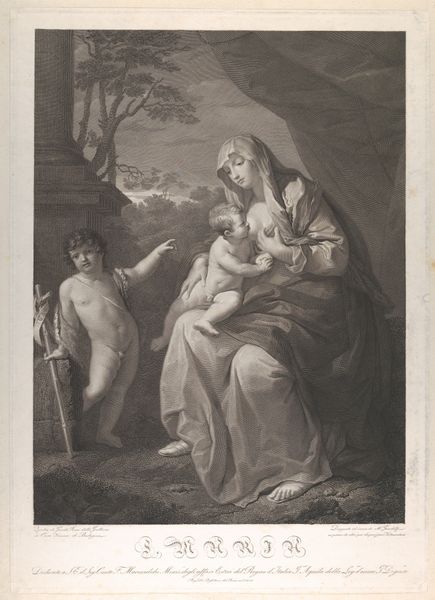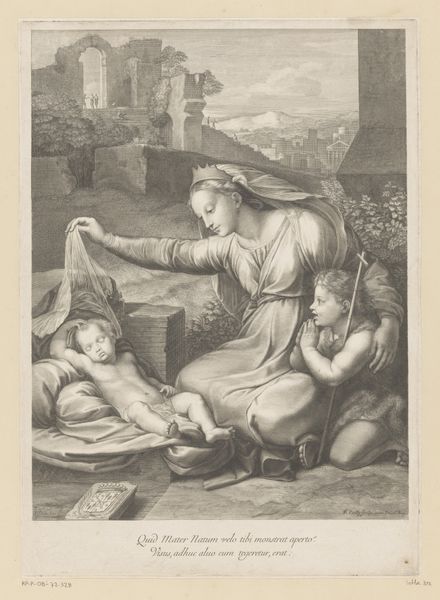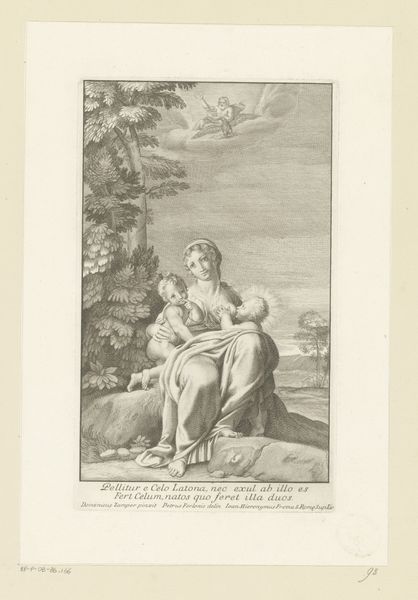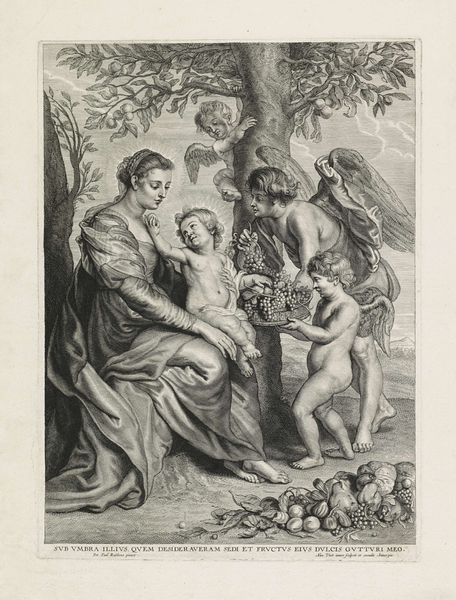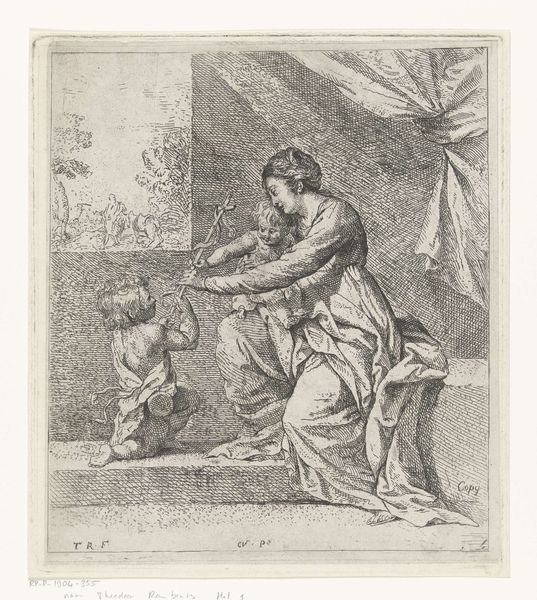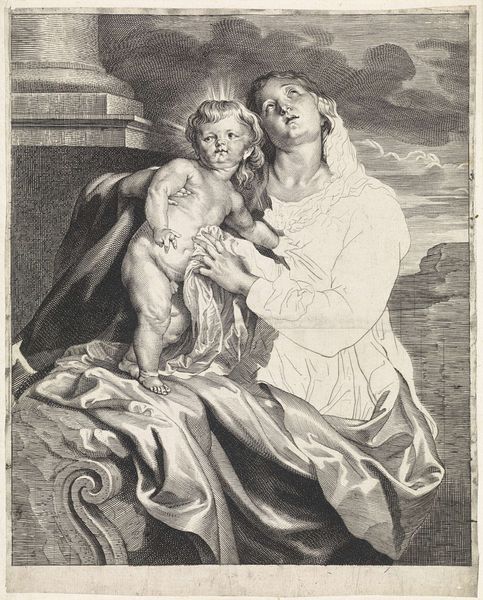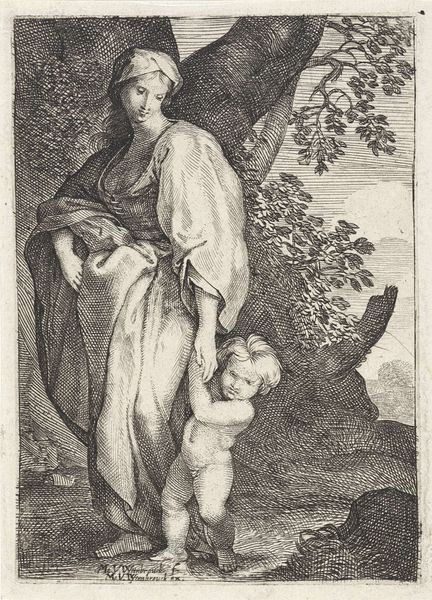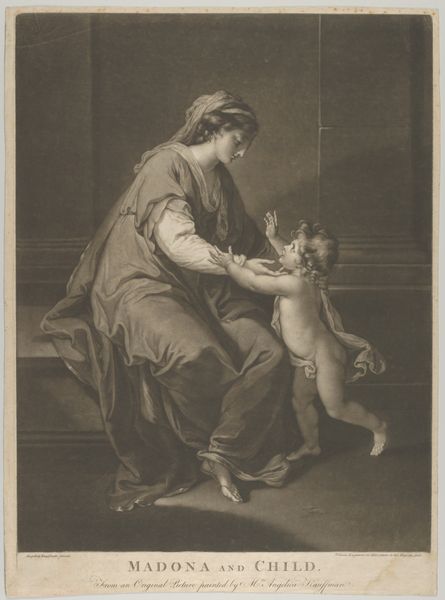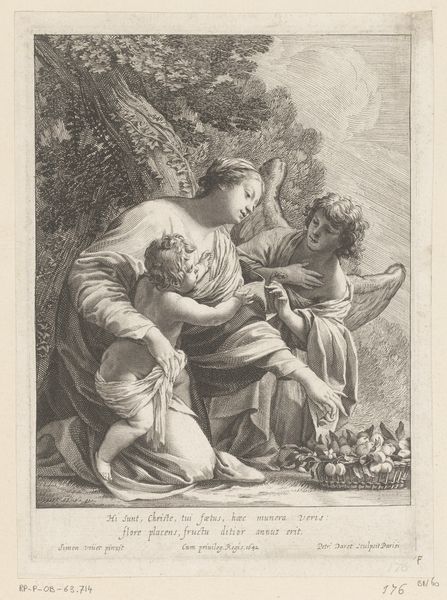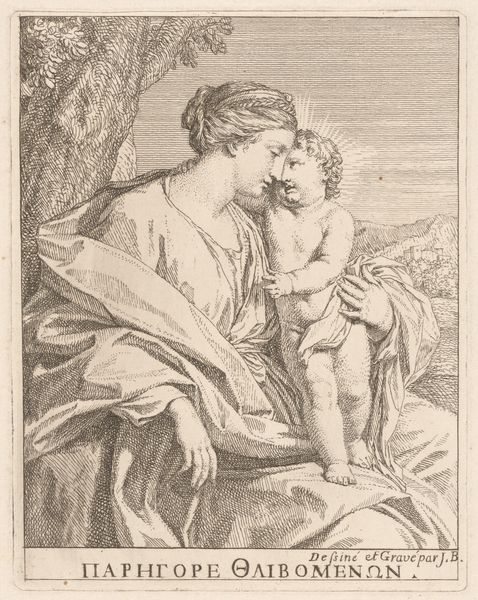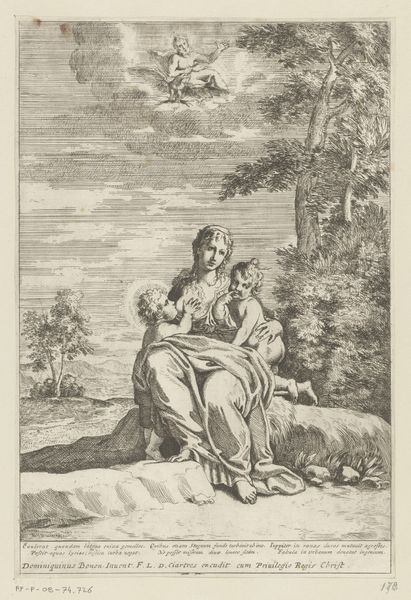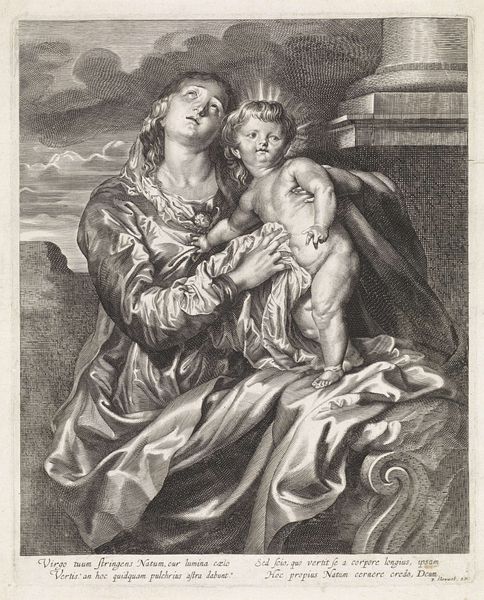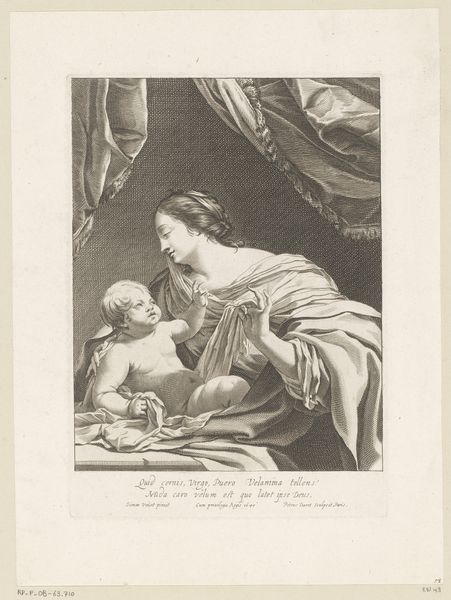
print, engraving
#
neoclacissism
#
allegory
# print
#
figuration
#
19th century
#
line
#
history-painting
#
engraving
Dimensions: height 511 mm, width 458 mm
Copyright: Rijks Museum: Open Domain
Curator: This engraving from 1772 is entitled "Clytia" and was created by Francesco Bartolozzi. Its balanced composition and classical style give it a distinctly neoclassical flavor. Editor: The immediate feeling I get from this is one of subdued melancholy. Despite the allegorical nature, there’s a tangible sense of longing in Clytia's posture, her downward gaze. It speaks to isolation and unrequited desire, which I read immediately as it connects to my own experience of heartbreak and disappointment. Curator: Indeed. The precision of the engraving lends a remarkable clarity to the figures. Note the crispness of the lines in her draped garments, which create a compelling play of light and shadow that define her form. There's a palpable tension in the implied tactile encounter as their hands are almost touching, but not quite. Editor: I am interested in thinking through the narrative that this image sets up. Bartolozzi illustrates a moment loaded with patriarchal themes, situating Clytia's tragedy within the broader story of female subjugation, the consequence of unfulfilled love in a society designed for male power. Curator: One might read the symbolic elements reinforcing that notion. Clytia’s transformation into a sunflower, ever gazing at the sun–representing Apollo, of course–is a striking visual metaphor. It captures an endless cycle of hope and despair in the linearity and flow of the image as it curves back on itself. It reminds me a lot of Plato's idea of the transmigration of souls; a soul caught between worlds. Editor: Right, but look more deeply. The very composition imprisons her within this circular frame, underlining her helplessness, mirroring how societal expectations once trapped us too in predetermined roles and narratives based on gender. Her beauty, while celebrated, becomes a symbol of her plight rather than her power. I look at that sunflower and consider today's lens and contemporary narratives of resilience and the overturning of traditional structures that were imposed in the past. Curator: I appreciate your reading of Clytia through a contemporary feminist lens. However, returning to the work’s formal qualities, one can admire Bartolozzi's mastery of engraving. His nuanced treatment of form and space transcends its allegorical narrative and truly places the work as a powerful statement about humanity itself. Editor: I agree with you that there's incredible craft here, but I cannot overlook how artistic interpretation remains in constant conversation with evolving sociopolitical contexts. The technical mastery you pointed out and these complex narratives are irrevocably linked.
Comments
No comments
Be the first to comment and join the conversation on the ultimate creative platform.
